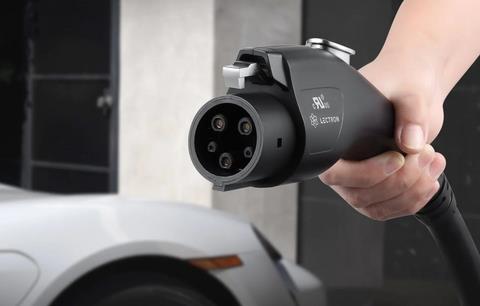Not sure about choosing a charger? Try our revamped Charger Finder!
Try our revamped Charger Finder!
- For Installations
- All our chargers come with a 1 year warranty
- Free Shipping
November 21, 2024
With so many different types of EV Chargers or EVSEs (Electric Vehicle Supply Equipment) on the market, it can be difficult to know which is best for your vehicle and situation.
So, NACS vs J1772 – which do you need? Read on to find out from the experts at EV Chargers.
In the U.S. up until early 2024, the most common charging connector standard for all non-Tesla EVs was the type 1 connector also known as J1772 chargers.
The circular connector includes 5 pins and offers single-phase, alternating current (AC) charging that can connect to all non-Tesla EVs and PHEVs in the US market. The EV Chargers with the J1772 connector are offered for a variety of outlets, such as:

Is universal
As the original go-to connection type for North America, EVs from different manufacturers rely on the J1772 connector.
This means that our charging experience should be very consistent and also means you can use compatible charging units across non-TESLA vehicles without an adapter. Something that makes investing in level 2 charging at home worthwhile.
Helps access the level 2 charging infrastructure
No matter what state you visit in the U.S., it should be easy to access the charging infrastructure that has been developed.
To find them, you can use apps or interactive maps, like the one from The US Department of Energy – putting a stop to range anxiety and break-downs on public highways.
Is incredibly safe
EV Chargers from reputable brands like ours come with built-in safety features, like ground fault protection, built-in breakers, and leakage fault detection, among others.
Most EV manufacturers will make the switch to the North American Charging Standard (NACS) in the next 2-5 years – with many announcing recently that they will start releasing EVs with NACS capabilities as soon as 2025.
By releasing Tesla technology to more EV drivers, the benefits from NACS connectors are accessible to even more people. This includes:
Increased charging opportunities
As the Tesla network continues to expand, more EVs than ever can take advantage of extra charging stations!
Across the U.S., there are currently around 27,000 individual chargers, with more coming.

Improved accessibility
Unlike the heavier cable that J1772/CCS1 charging stations have, NACS charging cables and receptacles are smaller and lighter – making them ideal for EV drivers with accessibility concerns.
This is a real issue for drivers who are in wheelchairs or who use mobility aids.
Don’t worry if your current electric car doesn’t have a NACS connector and you want to access level 2 NACS charging stations – all you need is a J1772 to Tesla adapter.
Spending hours researching NACS vs J1772? As we welcome the era of NACS charging for more American EV drivers, you don’t need to be left behind.
The introduction of adapters and residential EV Chargers means that recharging at home or on the go can be as simple as refueling at a gas pump.
So, for bespoke advice or for help ordering the right EV charger for your vehicle – instead of spending more time endlessly researching online, try our easy EV selector tool or reach out to our friendly and experienced team.
Just send us an email to [email protected] or open the green webchat bubble and we’ll help however we can.